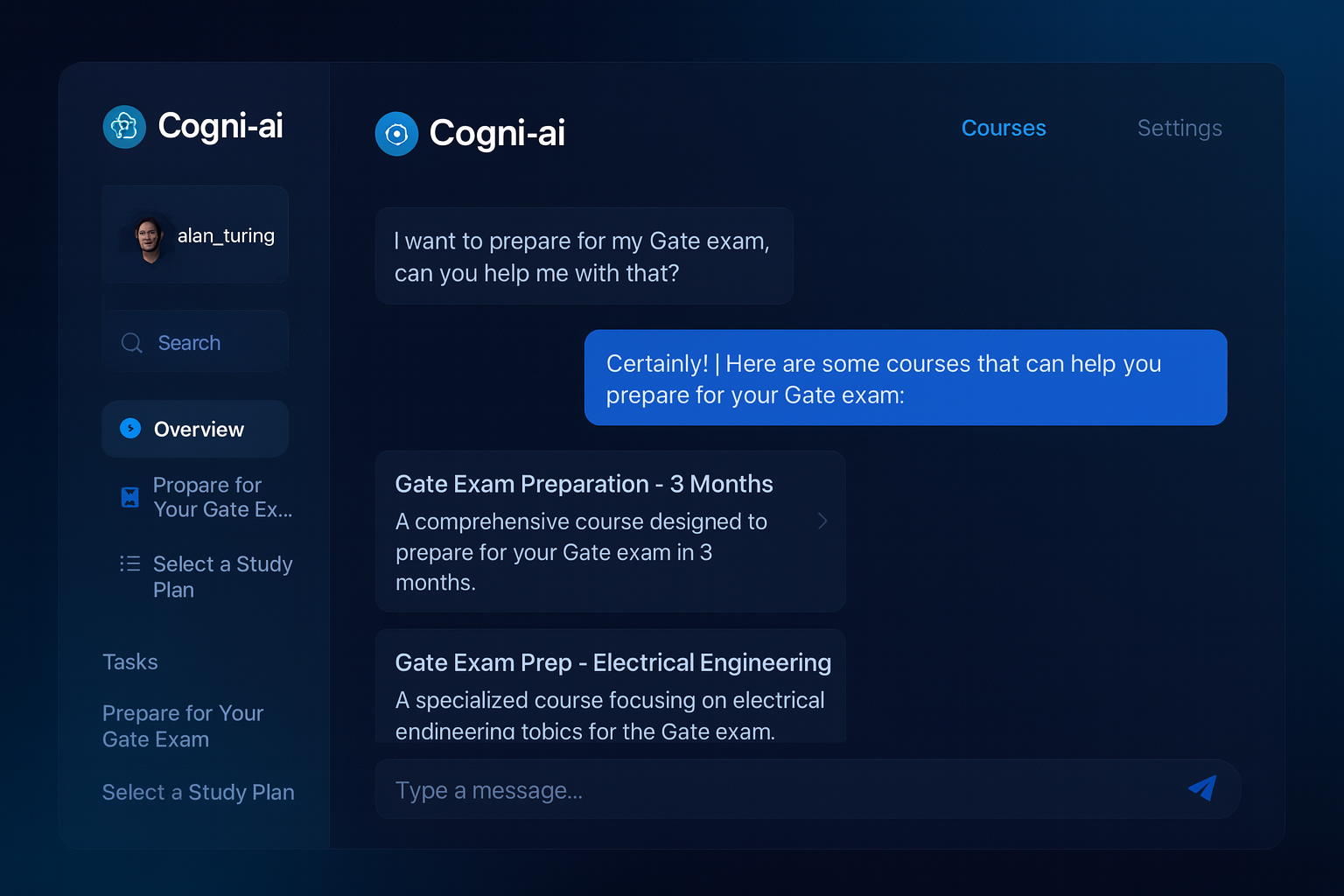
Cogni-AI — Enterprise RAG & Agent Platform
Build domain assistants with secure, cited answers
One‑liner
Cogni-AI lets your organization create AI chat assistants powered by your own data. Admins connect sources, define access, and tune retrieval; users ask questions and get cited, trustworthy answers—across web, desktop, or chat apps.
Product Snapshot
- What it is: Multi-tenant, role-based RAG platform for domain assistants (HR, SOPs, safety, engineering, sales, legal).
- Who it’s for: Companies, institutes, support, safety/compliance, IT, operations.
- Core outputs: Cited answers, key passages, downloadable snippets, procedures, and source links.
- Interfaces: Web app, mobile PWA, Slack/Teams add-ins, share links, embeddable widget.
- Admin control: Data spaces, access rules, connectors, chunking/reranking, prompts, analytics, audit logs.
- Security: Org/space RBAC, document ACLs, SSO/SAML/OIDC, encryption, audit events, PII redaction.
- LLM/RAG stack: Hybrid retrieval, reranking, enforced citations, confidence gating, feedback loops.
- Deploy: Cloud SaaS or private cloud (Docker/K8s); OpenAI/Azure, local LLaMA/Ollama, or Groq.
Roles & Permissions
- Super Admin: Multi-tenant controls, billing, global policies, model routing.
- Org Admin: Users/SSO, Data Spaces, labels, connectors, org analytics.
- Knowledge Manager: Ingest sources, tune chunking, curate Q&A, manage citations.
- Bot/Flow Designer: Build assistants, set tools, prompts, guardrails, fallbacks.
- Reviewer: Validate answers, resolve no‑answer cases, publish fixes.
- End User: Ask questions, get cited answers, export snippets, give feedback.
Data Ingestion & Connectors
- Files: PDF, DOCX, PPTX, XLSX/CSV, HTML, Markdown, images (OCR).
- Drives & Wikis: Google Drive, SharePoint/OneDrive, Notion, Confluence.
- Sites & Feeds: URL lists, sitemaps, RSS.
- Tickets/Repos (optional): JIRA, GitHub/GitLab (read‑only).
- Email sync (optional): support mailboxes for KB creation.
- Pipelines: dedup, OCR, language detect, PII masking, auto‑tagging, semantic/hierarchical chunking.
- Sync: one‑off import, scheduled sync, or webhook near‑real‑time.
- Vector/Index: pgvector, Milvus, Pinecone, Azure AI Search, ClickHouse vectors.
- Embeddings: OpenAI/Azure, local BGE/Instructor via Ollama. Rerankers: BGE/Cohere/Azure.
Retrieval & Answering
- Hybrid retrieval: BM25 + vectors + metadata filters; reranking with cross‑encoders.
- Citations always on with source cards; confidence gating with fallback guidance.
- Multi‑turn, role‑aware memory; no leakage across spaces.
- Optional tools: calculator, glossary, web fetch (allow‑list), SQL read adapters.
- Guardrails: forbidden topics, PHI/PII blocking, “internal‑sources only” mode.
User Experience
Left: Spaces & assistants; Center: chat with sources under each answer; Right: quick actions (export, create ticket, save, share).
Modes: Ask, Summarize, Compare docs, Extract table, Create FAQ. Accessible, multilingual UI.

Why companies adopt Cogni‑AI
- Single internal knowledge interface for every team
- Least-privilege answers: users only see what they’re allowed to see
- High trust: citations back to the original document and section
- Reduced context-switching: ask, summarize, generate docs, create tickets
- Measurable impact: time saved, ticket deflection, answer confidence